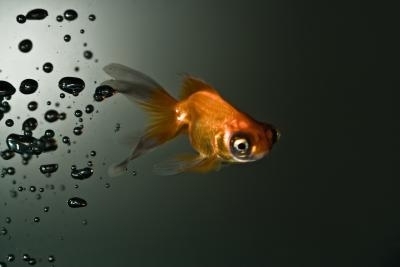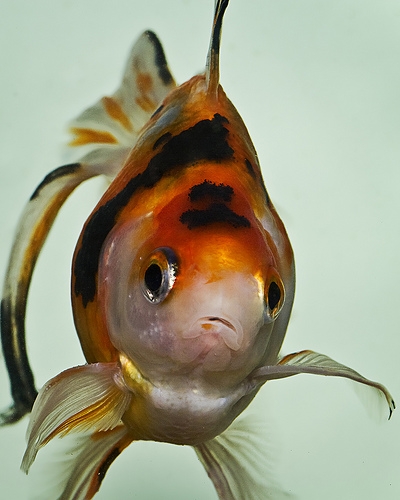
Scientific Name: Trigonostigma heteromorpha (formerly Rasbora heteromorpha)
Breeding Method: Plant spawner
Ease of Breeding: Difficult
Introduction: These colorful little Asian natives make an attractive addition to the comÂmunity aquarium, but can be difficult to spawn, possibly because they require extreme water conditions.
Sex Differences: The fins of male are redder, as is the rear half of their body. Females are plumper and deeper-chested when they are in spawning condition.
Water Conditions: Very soft and acidic, with a dH 1 to 3 and a pH of no higher than 6.0 with 5.0 to 5.5 being even better. Some breeders report success using rainwater filtered through peat. Temperature should be between 80° and 82°F.
Equipment: A tank of at least 10 gallons, with subdued lighting and a bare bottom. Add pots of broad-leaved plants such as those of the genera Alternanthera, Cryptocoryne, Echinodorus, and Microsomal.
Conditioning and Triggers: Condition males and females separately by feeding live, frozen, and freeze-dried food. When female is plump with eggs, transfer the two to a breeding tank and leave them alone to adjust.
Spawning: Within a week, the male should begin flaring his fins and cavorting in front of the female; then the two will cruise the tank together. When they find a suitable leaf on which to spawn, they turn upside down and he wraps his tail over her body, helping her to synerhronize the release of her eggs with that of his milt. The fertilized eggs, which are roughly the size of a pinhead but hard to see because they are transparent, are usually deposited on the underside of the leaf. The pair then swims around together some more, chooses another spawning site, and lays more eggs. (Subsequent spawning sites are usually near the first.) When spawning is completed, the breeding pair should be removed immediately, or they will hunt down and eat their eggs.
Brood Size: Up to 200 (younger females often have fewer eggs).
Fry Care: The fry will hatch in two to three days, and become free swimming four days after that. When this occurs, add a mature sponge filter to the tank and begin feeding small but frequent amounts of infusoria and liquid fry food. When they are a few days old, they will be big enough to eat hatched brine shrimp. Do not change water for the first two weeks to a month; after that, change about 10 percent of the water per week, being careful to use water of the same hardness, pH, and temperature. When the fry are about two months old, you can harden the water slightly.
Special Notes: The optimal breeding age for Harlequin Rasboras seems to be seven or eight months. By the time they are 20 months old, most females will no longer spawn.
 Cold-Water Fish Types
Cold-Water Fish Types
Cold-Water Fish
Cold-Water Fish Types
Cold-Water Fish Types
Cold-Water Fish
 What Are the Causes of Ick in Fish?
What Are the Causes of Ick in Fish?
Wh
What Are the Causes of Ick in Fish?
What Are the Causes of Ick in Fish?
Wh
 Life Span of Female Betta Fish Vs. Male
Life Span of Female Betta Fish Vs. Male
Life Span of Female Betta Fish Vs. Male
Life Span of Female Betta Fish Vs. Male
 Aquarium Setup
Buying an aquarium is a lot
Aquarium Setup
Buying an aquarium is a lot
 How to Take Care of a Puffer Fish
How to Take Care of a Puffer Fish
How
How to Take Care of a Puffer Fish
How to Take Care of a Puffer Fish
How
Copyright © 2005-2016 Pet Information All Rights Reserved
Contact us: www162date@outlook.com